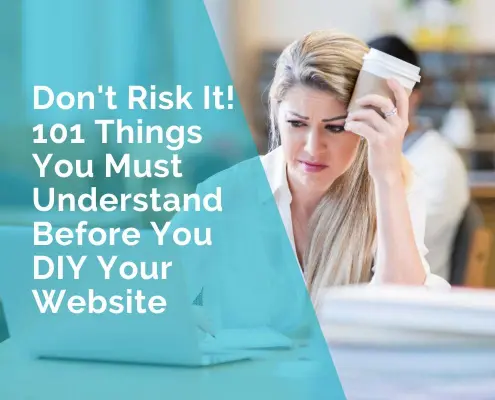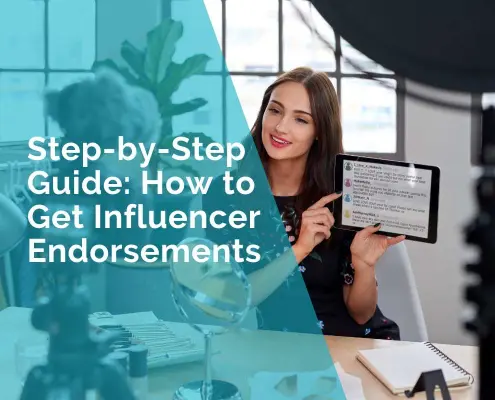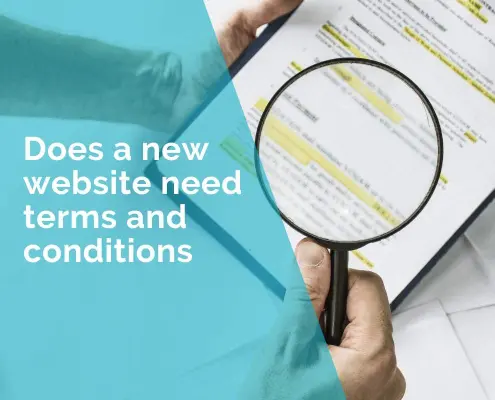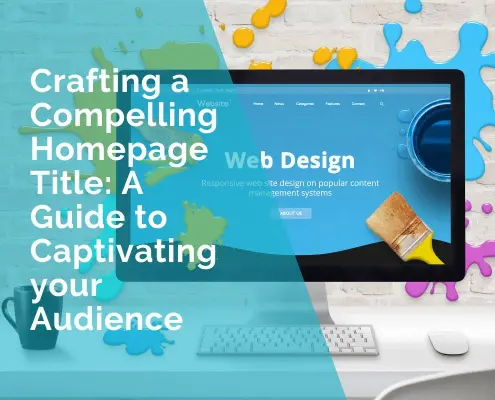Developing a Content Marketing Strategy
Definition of Content Marketing
Content marketing is about sharing useful, interesting stories that people actually want to read, watch, or listen to. Think of it as a way to connect with your audience by providing valuable information rather than just shouting about your products.
Importance of Content Marketing in the Digital Age
Okay, let’s be real – in the digital age, everyone’s online, and attention is a precious thing. Content marketing is your secret weapon to stand out. It helps you grab the spotlight and show why your brand is awesome. It’s not about bombarding folks with ads; it’s about building a relationship through interesting content that keeps them coming back for more.
Purpose of Developing a Content Marketing Strategy
Now, why bother with a content marketing strategy? Simple – it’s the roadmap that helps you share the right stuff with the right people at the right time. It’s not just about posting randomly; it’s about being deliberate and making sure every piece of content adds value. So, the purpose is clear: to make your brand shine in the crowded digital space and keep your audience hooked on your story. Let’s get that content game strong!
Understanding Your Audience
A. Defining Target Audience
1. Demographics
Picture this: You run a cozy local bakery, and knowing your audience is like baking the perfect cake. Demographics are the basic ingredients – age, gender, location, and income.
Let’s say your bakery is in a neighbourhood buzzing with young families. Your target audience might be parents aged 25-40, living within a 5-mile radius, looking for tasty treats to surprise their kids or indulge in a weekend treat themselves.
2. Psychographics
Now, let’s add some flavour! Psychographics dive into interests, values, and lifestyles. Sticking with the bakery, maybe your audience values organic ingredients and has a love for cozy, family-friendly atmospheres.
Understanding this psychographic profile helps you infuse the right ‘vibe’ into your marketing. You might focus on promoting your homemade, organic ingredients and create a warm, welcoming ambience in your bakery to align with their preferences.
3. Behavioral Patterns
It’s time to observe your customers’ dance moves! Behavioural patterns are about understanding how people act.
For our bakery, track what treats are flying off the shelves – are customers leaning towards gooey chocolate pastries on Fridays or fresh bagels on Sunday mornings? By observing these patterns, you can tailor your offerings and promotions to match their cravings and habits.
B. Creating Buyer Personas
Now, let’s give our audience a face! In the bakery example, meet “Busy Mum Becky” and “Weekend Indulger Mike.” Becky is a 35-year-old mom who values quick, delicious snacks for her kids, while Mike is a 28-year-old professional who loves treating himself to pastries on lazy Sunday mornings. Creating these personas helps you visualize your audience and tailor your marketing messages to resonate with each individual.
C. Conducting Audience Research
Dive into the neighbourhood gossip (in a good way)! Conducting audience research involves talking to your customers, analyzing social media interactions, and keeping an eye on local trends.
For our bakery, it could mean chatting with regulars about their favourite treats, running surveys on social media to gather preferences, and even peeking at competitors to see what’s working for them. The more you know, the better you can serve up exactly what your audience craves.

“Think of your content marketing strategy as a recipe; each ingredient contributes to a delicious dish that leaves a lasting taste in the minds of your audience.”
Ivana Katz
Setting Clear Objectives for your Content Marketing Strategy
A. Aligning with Business Goals
Let’s kick things off with a bit of business magic! Imagine you own a neighbourhood fitness studio.
Setting clear objectives help you align your fitness journey with the destination you’ve got in mind.
If your business goal is to become the go-to spot for wellness in your community, your content objectives should be the stepping stones towards achieving that bigger picture.
For instance, increasing class attendance, engaging with the local community, and boosting membership sign-ups can be specific objectives that align perfectly with your broader business goal.
B. SMART Objectives
Now, let’s get SMART (Specific, Measurable, Achievable, Relevant, Time-bound) about it! Think of SMART objectives as your trusty fitness tracker – keeping you on course and helping you track progress.
For our fitness studio, a SMART objective could be to increase class attendance by 20% in the next three months. It’s specific (more people in classes), measurable (you can count attendees), achievable (a realistic 20% increase), relevant (fits the goal of becoming a wellness hub), and time-bound (within the next three months). This way, you’re not just jogging in circles; you’re sprinting toward success.
C. Key Performance Indicators (KPIs) for Content Marketing
It’s time to weigh your content efforts on the marketing scale! Think of Key Performance Indicators (KPIs) as the reps and sets in your business workout.
For the fitness studio, track KPIs such as website traffic, social media engagement, and conversion rates. If your goal is to increase membership, monitor how many website visitors convert into new members after reading your blog posts or engaging with your social media content.
The number of sign-ups becomes a powerful KPI, indicating the direct impact of your content on your business objectives.

Content Audit and Inventory
A. Assessing Existing Content
Alright, let’s take a stroll down memory lane – or, in this case, content lane. Imagine you run a cozy bookstore in town. Assessing existing content is like flipping through the pages of your favourite novels – you want to see what you’ve got on the shelves.
So, dive into your blog posts, social media updates, and any videos or infographics you’ve shared. Check which content pieces gained the most likes, shares, or comments.
B. Identifying Gaps and Opportunities
Now, let’s play detective in the mystery section! Identifying gaps and opportunities is about spotting the missing chapters in your content story.
For the bookstore, it could be realizing you haven’t showcased your cozy reading nooks or highlighted customer book recommendations. By identifying these gaps, you open up opportunities to enrich your content.
Maybe it’s time for a blog post on the top 10 cozy reads for a rainy day or a video tour of your inviting reading corners.
C. Categorizing Content Types (blog posts, videos, infographics, etc.)
Variety is the spice of your content life! Categorising content types is similar to organizing your bookstore into genres – it helps your customers find what they love.
For our bookstore, your content types could include blog posts about new releases, behind-the-scenes videos of author interviews, and infographics showcasing reading challenges.
Categorizing allows you to see the content landscape clearly. You might realize your blog is thriving, but you could add more visual spice with engaging videos or infographics to cater to different reader preferences. It’s all about curating a content collection that keeps your audience eagerly turning pages, both online and in-store.

Competitive Analysis
A. Analyzing Competitors’ Content Strategies
Welcome to the friendly neighborhood showdown! Analyzing competitors’ content strategies is like sizing up the competition on the soccer field.
Picture this: you own a local coffee shop. Check out what the other cafes in town are brewing. Are they dominating Instagram with latte art tutorials or sparking conversations on Twitter with witty coffee-related memes? By peeking into their playbook, you get a feel for the strategies that are scoring points. It’s not about copying; it’s about learning from the game to strengthen your own strategy.
B. Identifying Strengths and Weaknesses
Time to don your detective hat and identify your opponent’s strengths, weaknesses and vulnerabilities.
Sticking with the coffee shop example, perhaps your competitors excel at engaging with customers on social media, but their website lacks a user-friendly online ordering system. That’s a potential opening! Recognizing these strengths and weaknesses helps you find the sweet spot where your coffee shop can shine. Maybe you can focus on creating a seamless online experience for customers, giving you an edge in the digital game.
C. Differentiating Your Content
It’s showtime, and your stage is set! Think of differentiating your content as being the lead actor in a blockbuster movie – you want your performance to stand out.
Take the insights from your competitive analysis and use them to craft content that is uniquely yours.
Let’s say your coffee shop competitors are all about showcasing the perfect pour-over method. Differentiate by highlighting the stories behind your coffee beans, introducing your baristas, or sharing customer testimonials.
Create a content narrative that not only reflects your brand but also gives customers a reason to choose your brew over others. It’s not about being louder; it’s about being memorable.
Brand Voice and Messaging
A. Defining Brand Voice
Imagine your business as a character in a storybook – that’s your brand voice.
Let’s say you run a local pet grooming salon. Your brand voice is the friendly, upbeat groomer who speaks the language of pets and their owners. It’s the tone and personality you use in all your communications, be it on your website, social media, or in-person interactions.
For the pet grooming salon, the brand voice could be warm, playful, and knowledgeable – like a trusted friend who knows everything about pampering pets.
B. Consistent Messaging Across Channels
Picture this as a catchy jingle that everyone hums along to – consistency is the key!
In our pet grooming salon, if your website boasts a bubbly and playful tone, make sure your social media posts and in-store signage echo that same vibe.
Consistent messaging across channels is about creating a harmonious experience for your customers. It’s the familiar tune that keeps them engaged and excited about your brand.
C. Aligning with Brand Values and Mission
Time to unveil the grand mission statement – your brand’s guiding star! For our pet grooming salon, if your mission is to provide a stress-free and enjoyable grooming experience for pets and owners, let that mission shine through in your messaging.
Talk about your gentle grooming techniques, share stories of happy pets leaving with wagging tails, and emphasize your commitment to creating a positive environment.
Aligning your messaging with brand values and mission is similar to telling a story that customers want to be a part of – it’s not just about grooming pets; it’s about creating moments of joy and well-being.

Content Creation and Planning
A. Content Calendar
1. Monthly Themes
Think of your content calendar as a flavorful recipe book – each month a new chapter, and each theme a unique spice.
If you own a local florist, consider a “Blossom Bonanza” theme in spring, showcasing different flowers each week. May could be all about vibrant tulips, while June focuses on fragrant roses. Planning monthly themes not only adds variety but also keeps your content fresh and in tune with the seasons.
2. Seasonal Campaigns
Imagine your business as a protagonist in a blockbuster movie – seasonal campaigns are your exciting plot twists.
For our florist, a summer campaign could involve “Sunshine Bouquets” with bright, sunflower-centered arrangements. Planning seasonal campaigns ensures your content is relevant and taps into the current vibes. Whether it’s Valentine’s Day bouquets or autumn-inspired centrepieces, align your content with the rhythm of the seasons.
B. Content Formats and Channels
1. Blog Posts
Think of blogging as sharing heart-to-heart stories with your audience. If you own a cozy bookstore, consider weekly book reviews, author spotlights, or literary discussions. Blogs are your canvas for in-depth storytelling, helping your audience connect with the passion behind your business.
2. Social Media
Social media is your storefront window – visually appealing and ever-changing. If you’re a local bakery, share mouth-watering images of your daily specials on Instagram, run fun polls on Twitter asking about favourite desserts, and engage with your community on Facebook. Social media brings your brand to life, making it accessible and shareable.
3. Videos
Lights, camera, action – videos are your chance to showcase behind-the-scenes magic. For a pet grooming salon, create short videos demonstrating grooming techniques, introduce your talented groomers, or share heartwarming pet stories. Videos add a dynamic touch to your content, capturing attention and conveying your brand personality effectively.
4. Podcasts
Imagine your brand as the host of an engaging radio show – that’s the power of podcasts. If you’re a fitness studio owner, consider a podcast series on health tips, success stories from your clients, or interviews with fitness experts. Podcasts offer a convenient way for your audience to connect with your expertise while multitasking.
C. Editorial Guidelines and Style Guide
Crafting content without guidelines is similar to sailing without a compass. Establishing editorial guidelines and a style guide ensures a consistent brand voice. If you run a local coffee shop, your guidelines might emphasize a casual, friendly tone. Specify rules on image usage, language preferences, and even emoji etiquette. A style guide helps maintain a cohesive brand image across all your content, building trust and recognition.

Distribution and Promotion
A. Social Media Promotion
Social media is your megaphone – make some noise! For a fitness studio, use Instagram to showcase client success stories, share workout tips on Twitter, and run Facebook contests for free class passes. Social media promotion amplifies your content, reaching a wider audience and sparking engagement.
B. Email Marketing
Think of emails as personalized letters to your most loyal customers. If you own a bakery, send out mouthwatering newsletters featuring upcoming specials, exclusive discounts, or behind-the-scenes baking stories. Email marketing keeps your brand on the radar, fostering a direct connection with your audience.
C. Influencer Marketing
Imagine influencers as the ambassadors of your brand – they amplify your voice. For a pet grooming salon, partner with local pet influencers to share their grooming experiences on social media. Influencer marketing leverages the credibility and reach of influencers, introducing your brand to a broader audience.
D. Paid Advertising Strategies
Paid advertising is like a turbo boost for your content. If you’re a florist, use targeted Facebook ads or converting Facebook video ads to promote your seasonal campaigns or invest in Google Ads for local flower delivery searches. Paid advertising ensures your content gets in front of the right eyes, driving traffic and conversions effectively.
Monitoring and Analytics
A. Tools for Content Performance Tracking
Welcome to the command centre of your content strategy.
Imagine you run a local tech store; tools for content performance tracking are your high-tech gadgets. Google Analytics is your superhero, revealing website traffic, popular pages, and user behaviour. Social media insights act as your trusty sidekick, showing engagement levels and audience demographics. These tools empower you to gauge the impact of your content efforts and make informed decisions.
B. Analyzing Key Metrics
1. Traffic and Engagement
Traffic is the heartbeat of your online presence, and engagement is the applause. For our tech store, track website traffic to see which products or blog posts attract the most visitors. Are users spending quality time exploring your site, or is there a high bounce rate? Analyzing traffic and engagement metrics helps you understand what resonates with your audience and where adjustments are needed.
2. Conversion Rates
Think of conversion rates as the applause turning into standing ovations – it’s the ultimate measure of success. If your tech store has an online shop, monitor conversion rates to see how many website visitors actually make a purchase. Are your product pages convincing enough, or is there a hiccup in the checkout process? Analyzing conversion rates guides you in refining content to drive desired actions from your audience.
3. Social Media Reach
Social media reach is the ripple effect of your online presence. If you’re promoting gadgets in your tech store, monitor social media reach to see how many people are exposed to your posts. Are your hashtags trending, or are your shares reaching a wider audience? Social media reach metrics unveil the effectiveness of your content in expanding your brand’s visibility and influence.
C. Iterative Improvement Based on Analytics
The beauty of analytics is in the power of evolution – it’s not about perfection but continuous improvement.
Imagine your content strategy as a software program, and analytics are the updates that keep it running smoothly. If your tech store’s blog posts about the latest gadgets are getting high engagement but product pages lack conversions, iterate! Refine your product descriptions, add customer reviews, or introduce limited-time promotions based on analytics insights. The iterative improvement cycle ensures your content strategy is a dynamic, ever-optimizing force, aligning with the changing needs and preferences of your audience. So, let the data be your guiding star, guiding you toward content greatness.
 Ivana Katz from Websites 4 Small Business is an award winning web designer who builds websites that build your business. She provides unbeatable web design services to fit your budget.
Ivana Katz from Websites 4 Small Business is an award winning web designer who builds websites that build your business. She provides unbeatable web design services to fit your budget.
The end result? Professional, custom-made sites that give your business the extra oomph it needs to stand out from the competition and make an impact.
Whether you’re a brand-new business or an established one ready to improve your digital presence, Ivana makes it easy to get your business online very quickly. Her websites are professional, tailored to fit your budget, and give your business a serious boost.
Download your FREE copy of “Ultimate Website Design Secrets Blackbook – 10 Bulletproof Strategies for Designing an Outrageously Successful Website”












